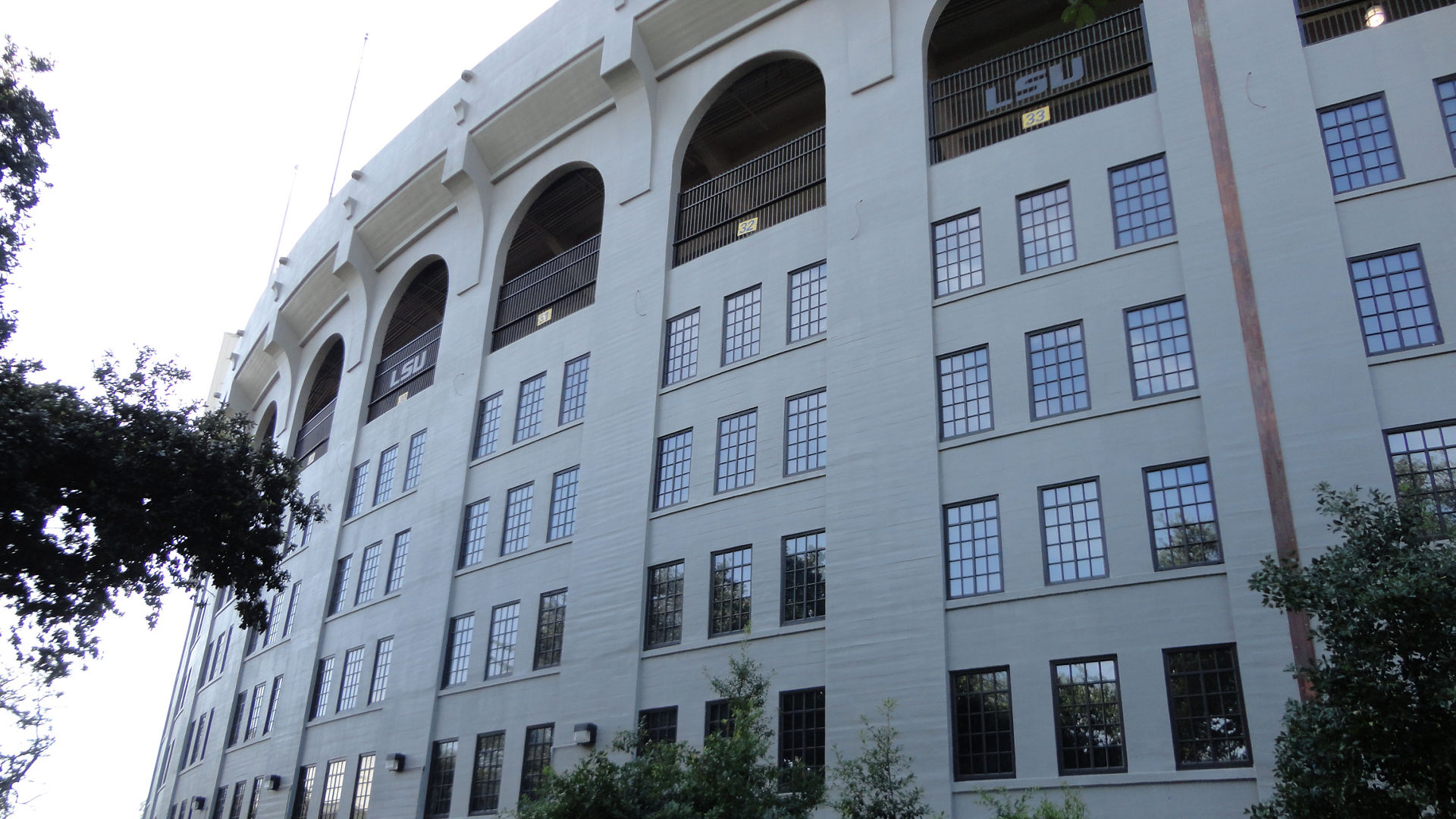2023
Baton Rouge, LA
Preservation of Tiger Stadium
The ability to maintain the iconic original look and restore the structure for many more years to come is a testimony to the efforts and coordination of the project team. With the help of construction products of today and software technologies that support these projects, success is almost a certainty if implemented with a desire to succeed. College football in the USA dates back to the year 1869. Louisiana State University’s Tiger Stadium is one of these iconic American landmarks which were built in the 1920’s. At the time, the stadium had the capacity to hold 24,000 people. It can now hold as many as 102,321 people on game day!
Restoration Needs
The north end zone, constructed in 1936, was experiencing concrete deterioration on the outer surface due to insufficient concrete cover on the reinforcing bars and cracks that had developed particularly above and below the newly installed windows. The façade has undergone minor spot repairs of spalls and surface cracks and was littered with abandoned anchor bolt holes. LSU wanted to restore this façade while maintaining the historic look. The original stadium was formed with 2” x 6” horizontal planks, which are visible between the planks in the concrete. It was critical to restore the finish and maintain the formed planks look through careful consideration. The concrete restoration process was complicated due to newly installed windows that had been installed prior to the façade restoration.
Conclusion
Ten years later after the initial repairs the project looks as good as it was in 2012 at the time of restoration. According to the EOR, all the repairs are intact with very minor discoloration in some areas with high UV exposure. This project was successfully completed with 46,000 safe working hours. The two main components of this accomplishment were pre-task planning and sub-contractor buy in of the contractor’s SOR (Safety Observation Report) process. Pre-task planning took place with each sub-contractor one to two weeks before mobilization. Everyone on site knew that they had the authority and responsibility to stop any unsafe acts. Unsafe acts and unsafe conditions were discussed and resolved on the spot when possible. In less than 7 years, Tiger stadium will be hosting its centennial celebrations. It would not have been possible without the advancements the repair industry has made in materials, technology and overall execution of projects. LSU Tiger stadium repair project is a testimony to what the concrete repair world has to offer. LSU Tiger stadium restoration needs to be recognized for achieving what the repair industry can be proud of.

